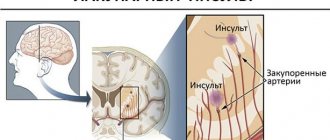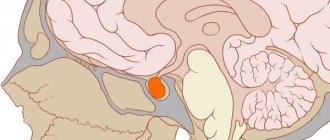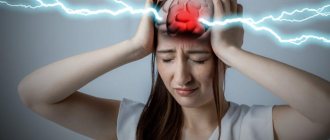What is Huntington's disease?
Huntington's disease (Huntington syndrome, Huntington's chorea, or Huntington's chorea) is a genetic, progressive neurodegenerative disease characterized by the gradual development of involuntary muscle movements affecting the arms, legs, face, and trunk, and the progressive decline of cognitive processes and memory (dementia).
Neurological movement abnormalities may include uncontrolled, irregular, fast, jerking movements (chorea, choreic hyperkinesis) and athetosis, a condition characterized by relatively slow, writhing, involuntary movements. Dementia is usually associated with progressive disorientation and confusion, personality disintegration, impaired memory control, anxiety, agitation, and other symptoms and signs. In patients with the disorder, the duration of the disease can vary from approximately 10 to 25 years or more. Life-threatening complications may occur as a result of pneumonia or other infections, injuries associated with falls, or other related processes as a result of the disease.
Huntington's chorea is transmitted as an autosomal dominant trait. The disease occurs as a result of changes (mutations) in the HTT gene. The HTT gene, located on the short arm (p) of chromosome 4 (4p16.3), encodes a protein known as “Huntingtin.” This gene contains a region with a repeating sequence of three nucleotide bases - cytosine-adenine-guanine (i.e., CAGCAGCAG...). The length of expanded repeats may influence the age at onset of symptoms. The specific symptoms and physical signs associated with Huntington's disease result from the degeneration of nerve cells (neurons) in certain areas of the brain (eg, basal ganglia, cerebral cortex).
What are the causes and mechanisms of development of this neurodegenerative pathology?
Huntington's disease is a pathology with an autosomal dominant mode of inheritance. That is, if one of the parents is ill, the risk of having a child with this genetic mutation is 50%. If such a change is present in a person’s DNA, then by the age of 70–72 the disease will definitely manifest itself, there are no exceptions.
The gene defect is observed in the short arm of chromosome 4 and consists of a multiple repetition (“expansion”) of the nucleotide fragment cytidine-adenine-guanine (CAG) in a section of DNA that normally encodes the huntingtin protein, consisting mainly of the amino acid glutamine. As a result, its normal structure is disrupted, it increases significantly in size, curls into balls in the cytoplasm of neurons, which leads to apoptosis (death) of cells.
Normally, in humans, the number of CAG repeats is 30–33, but in the case of Huntington’s disease, this number increases (from 37 to 120). And the more such repeats in the genotype, the earlier the manifestation of chorea will be (the “anticipation” phenomenon). But this does not in any way affect the severity of the disease.
Pathomorphologically, the disease is characterized by diffuse degenerative processes in the central nervous system. A decrease in brain mass due to atrophic processes is detected. The volume of the ventricles of the brain increases due to the thinning of its parenchyma.
The most significant changes develop in the subcortical structures, namely in the striopallidal system. Cell death and degenerative processes are noted in the caudate and lenticular nuclei, as well as in the globus pallidus. Atrophy also affects the cerebral cortex. In place of dead neurons, neuroglial cells (astrocytes, oligodendrocytes) grow.
Neurodegenerative processes are accompanied by disruption of the GABAergic and dopaminergic systems, leading to an increase in the influence of the latter.
Signs and symptoms
Signs and symptoms of the disease (see video) most often appear in adults aged 30-50 years, but can appear at any age. Symptoms tend to worsen over 10-25 years.
Over time, Huntington's disease or its complications are fatal.
According to the Huntington's Disease Society of America, symptoms of the disorder can be similar to amyotrophic lateral sclerosis (ALS), Parkinson's disease and Alzheimer's disease all rolled into one.
Main symptoms include:
- personality changes, mood swings and depression;
- problems with memory and judgment;
- unsteady walking and uncontrolled movements (choreic hyperkinesis);
- difficulty speaking and swallowing;
- weight loss.
How the signs and symptoms of the disease progress depends on the individual. In some patients, depression occurs before motor skills are affected. Mood swings and unusual behavior are usually the first to appear.
— Early signs and symptoms.
Early symptoms may not be recognized if the disease has not previously run in the family. It may take a long time to establish a diagnosis.
Initial signs and symptoms include:
- slight uncontrolled movements;
- minor changes in coordination;
- minor mood changes;
- lack of attention, slight problems with concentration and difficulties at work;
- lapses in short-term memory;
- depression;
- irritability.
Symptoms
Unreasonable grimacing when talking can be a sign of chorea.
To date, two forms of Huntington's disease have been studied:
- typical Huntington's chorea (classical): usually develops after 40 years. The clinical picture is dominated by excessive movements with decreased muscle tone;
- juvenile form (Westphal variant) - appears early, in the first or second decade of the patient’s life (the earliest case described in medicine is at 3 years).
The juvenile form accounts for about 10% of all cases of Huntington's disease. With this form, muscle tone is increased, and involuntary movements are less pronounced. Despite this, it has a very unfavorable course with early death.
The typical form of the disease has the following features. The disease creeps up on the patient gradually. “Small” oddities appear in facial expressions:
- grimacing when talking;
- lip smacking;
- sniff;
- frowning;
- frequent unmotivated sighs;
- making various sounds that are inappropriate for the place and time (for example, grunting);
- sticking out the tongue and the like.
Gradually, chorea progresses, movements on the face are joined by “unnecessary” movements throughout the body: nodding the head, dancing, waving arms, swaying to the sides, crossing arms or legs. Swallowing problems develop and speech becomes incomprehensible. Motor disorders also manifest themselves in the form of an inability to maintain a given posture for some time: a person cannot fix his gaze on an object for more than 20 seconds, or cannot hold a clenched fist. At the beginning of the disease, voluntary suppression of unnecessary movements and facial expressions is possible, and gradually volitional control is lost. Impaired swallowing can lead to food entering the bronchopulmonary system and contribute to the development of pneumonia.
At the initial stage of the disease, “extra” movements can be provoked by the following tests:
- put in the Romberg pose: legs together, arms raised up to the horizontal, palms facing down, eyes first open and then closed;
- lying on your back with arms outstretched;
- talk to the patient about these movements.
Over time, pathological movements may disappear, a general slowness of movements appears, muscle tone increases, the ability to self-care is impaired, and even the most primitive skills are lost: fastening buttons, the ability to use a spoon and fork, etc.
With Huntington's chorea, muscle strength is not impaired, sensitivity is not affected. As the disease progresses, most patients develop nystagmus: involuntary eye movements of a rhythmic nature. Urinary disorders may appear in later stages of the disease.
Another characteristic symptom of Huntington's chorea is mental disturbances. Usually these symptoms occur against the background of “unnecessary” movements. At first it is simply increased emotionality, short temper, sleep disturbance, decreased attention, and memory impairment. There may be a tendency to bad habits: alcoholism, drug addiction, gambling addiction, the emergence of hypersexuality. Gradually, mental disorders progress: unmotivated aggression, delusional ideas, suicidal thoughts and hallucinations appear. Criticism of their condition is reduced, patients become completely inadequate.
Intellectual indicators fall, patients cannot navigate their surroundings, and do not recognize their relatives. Such a patient is a great grief for the family. All this ultimately leads to the development of dementia (dementia), a total lack of intelligence. Of course, patients with Huntington's chorea at this stage require constant care.
Typically, 10-20 years pass from the onset of the disease to death. Such patients die from infection or pneumonia. Sometimes suicide attempts cause death.
The Westphal variant has a more malignant course. Excessive movements are less pronounced, but epileptic seizures may additionally occur. Speech disorders appear early. Death occurs within 8-10 years.
Huntington's disease is always hereditary, autosomal dominant. This means that in a family where the disease is detected, the risk for subsequent generations is very high.
Causes of Huntington's disease
The disease is inherited as an autosomal dominant trait. Human traits, including classical genetic diseases, are the product of the interaction of two genes, one passed on from the father and the other from the mother.
In dominant disorders, one copy of the disease gene (obtained from the mother or father) will be expressed as “dominant” over the other normal gene and result in the disease. The risk of passing the disorder from the affected parent to the offspring is 50% in each pregnancy, regardless of the sex of the child.
Huntington's chorea is caused by changes (mutations) in a gene located on the short arm (p) of chromosome 4 (4p16.3). Chromosomes are found in the nucleus of all cells in the body. They carry the genetic characteristics of every person. Pairs of human chromosomes are numbered 1 to 22, with an unequal 23rd pair of X and Y chromosomes for males and two X chromosomes for females. Each chromosome has a short arm (arm), designated by the letter "p", and a long arm, designated by the letter "q". The chromosomes are further divided into numbered bands.
This gene, known as HTT, controls the production of the protein Huntingtin, found in nerve cells (neurons) throughout the brain. However, the specific function of the protein is unknown. In patients, the HTT gene contains errors in the encoded “building blocks” that carry its specific genetic instructions.
The instructions in each gene consist of different patterns of four basic chemicals (nucleotide bases) called adenine (A), cytosine (C), guanine (G) and thymine (T). In people with the disease, the HTT gene contains abnormally long repeats of cytosine-adenine-guanine encoded instructions (trinucleotide CAG (CAG) repeat expansions). For example, people with the disorder have more than 35 CAG repeats in the HTT gene, with most having more than 39. However, people without the disorder have about 20 repeats in the gene.
Causes
Genetic aspects . Increase in the number of CAG repeats - triplets of the huntingtin gene (143100, HD gene, IT15, 4p16-3, Â). Paternal transmission of the gene, as well as an increase in the number of repeats, leads to a more severe form of the disease, early onset and rapid progression.
Pathogenesis . Progressive death of nerve cells. A marked decrease in the content of neurotransmitters (g - aminobutyric acid, glutamate decarboxylase, substance P, enkephalins) in the basal ganglia. A marked decrease in the activity of the mitochondrial respiratory chain in the caudate nucleus.
Pathomorphology . Macroscopically: atrophy of the caudate nucleus and dilatation of the ventricles. Microscopically: gliosis and neuronal death, especially in the caudate nucleus and putamen.
Diagnostics
Because symptoms are mild in the early stages of Huntington's disease, it can be difficult to recognize its onset. Suspicion may be based on symptoms and the presence of this disease in the patient's relatives. The doctor should be told about relatives who have had mental disorders or who have been diagnosed with a neurological or mental illness (for example, Parkinson's disease or schizophrenia), since the illness in these relatives may have been confused with another nervous or mental illness.
Computed tomography (CT) or magnetic resonance imaging (MRI) is done to rule out other diseases and to look for degeneration of the basal ganglia and other areas of the brain that the disease typically affects.
Additionally, genetic analysis is performed to confirm the diagnosis. It is important for people who do not have symptoms of Huntington's disease but have a family history of the disease to undergo genetic testing and counseling. The fact is that such people may have children before the first symptoms appear. Genetic counseling should precede genetic testing. For consultation, such people are referred to a center that specializes in solving complex ethical and psychological problems associated with genetic research.
Development mechanism
Regardless of the type of chorea, damage is observed to the medulla oblongata, which is responsible for reflex motor activity and also takes part in the performance of voluntary movements.
The medulla oblongata performs a number of functions:
- Reflex. Regulates breathing, muscle tone, oculomotor and protective reflexes. The latter, in particular, include swallowing, blinking, coughing, and sneezing.
- Conductor. Here nerve impulses pass to the brain from the spinal cord and back.
- Integrative. The medulla oblongata is responsible for some complex functions, such as regulating the position of the eyes during head movements.
Damage to areas of the medulla oblongata leads to disruption of these functions.
Disorders with similar symptoms
Symptoms of the following disorders may be similar to those of Huntington's chorea. Comparisons can be useful for differential diagnosis:
- Hallervorden-Spatz disease is a rare, progressive disease that affects muscle movement. The disorder is associated with degeneration of the nervous system. Hallervorden-Spatz disease is characterized by uncontrolled muscle movements (dystonia), muscle rigidity and loss of cognitive abilities (dementia). Symptoms of the disease usually begin in childhood, although sometimes the disease begins in adulthood.
- Multiple system atrophy (MSA) is a group of rare inherited diseases characterized by progressive degeneration of the cerebellar cortex and other brain tissues. Several different types of systemic atrophy have been identified, with symptoms varying widely depending on the type of MSA. Typically, these disorders are characterized by impaired ability to coordinate muscle movements, tremors, involuntary muscle jerks, speech impairment (dysphasia), loss of cognitive abilities and mental deterioration.
- Rheumatic chorea (Sydenham's chorea) is a nervous system disorder that occurs suddenly after a streptococcal infection, such as scarlet fever, pharyngitis or rheumatic fever. The disorder usually affects young children and teenagers. Sydenham's chorea is characterized by rapid, involuntary, non-repetitive muscle movements that may gradually become more severe and frequent. The muscles of the arms and legs are most severely affected. Speech may also be impaired. Other common symptoms may include a clumsy gait. Chore-like muscle movements tend to disappear with sleep. The disorder usually resolves in 3-6 months without permanent neurological or muscle damage.
- Wilson's disease is a rare genetic disorder characterized by excess copper in various tissues of the body, especially the liver, brain and corneas of the eyes. The disease is progressive and, if left untreated, can cause liver disease, central nervous system dysfunction, and death.
- Tourette syndrome is a neurological movement disorder that usually first appears between the ages of 2 and 16 years. Initial symptoms are often rapid eye blinking (nystagmus) or facial tics. Tourette syndrome is not a progressive or degenerative disease, and patients live a normal life expectancy.
Huntington's chorea: diagnosis, symptoms and treatment
“Driving along a forest road... my father and I met two women, a mother and a daughter, who were tall and plump, deathly pale, and who were constantly swaying, whistling and grimacing. I froze not so much in amazement as in fear. What could this mean? My father stopped to talk to them and then we continued on our way.
Since I began studying medicine, my interest in this disease has become inexhaustible.”
The boy who witnessed this episode in 1858 was only 8 years old at that time. Today we know him as Dr. George Huntington.
— Isabella Ivanovna, today, on the birthday of George Huntington, an American doctor who became famous thanks to the first classical description of the disease in the history of medicine, named after him, let’s talk about Huntington’s disease or chorea. What it is?
Huntington's disease (as well as all its synonyms - Huntington's disease/chorea, hereditary/degenerative chorea, etc.) is a severe, hereditary pathology of the nervous system, manifested by motor disorders, mental changes and dementia (dementia).
Despite the fact that the honor of the first publication about this disease belongs to Huntington, before him this disease was studied by the Norwegian doctor Johan Christian Lund. However, his works were translated into English only in the 50s of the last century, and therefore most of the scientific world learned about chorea from Huntington. However, giving due credit to Lund, in the literature the disease is sometimes called Lund-Huntington disease.
— Is this a neurological or psychiatric disease?
Huntington's chorea is a disease that is treated by different specialists. It all depends on what manifestations are observed or predominant in the patient at a particular period of development of the disease.
Among the initial manifestations of the disease, the following are sometimes noted: behavioral disorders, decreased sexual desire, gambling addiction, a tendency to excessively express emotions, the appearance of delusions, and hallucinations. This is the area of expertise of psychiatrists.
In other cases, chorea debuts precisely with movement disorders - so-called hyperkinesis. These are involuntary movements in various parts of the body - face, limbs. Neurologists treat such manifestations.
— Is Huntington’s disease somehow reflected in ICD-10?
Yes, respectively, in two sections: in diseases of the nervous system under code G10, and in mental disorders under code F02.2.
— How common is this disease?
Quite rare. In Caucasians, the incidence ranges from 3 to 10 cases per 100,000 people. Among representatives of other races, the frequency is lower - 1 in 1,000,000. At the same time, one must not discount the fact that Europeans may simply be examined more often, and therefore the detection rate of Huntington's disease is higher among them.
— What causes the development of Huntington's chorea?
Genetic changes. The HTT gene, responsible for the development of the disease, is located on the 4th chromosome. Thanks to this gene, a special protein is encoded - huntingtin (huntingtin). The function of its normal form is unknown. A protein altered by a genetic mutation acquires different properties, which leads to the development of Huntington's disease.
— What does science say about the likelihood of inheriting this disease?
It is inherited from a person who is a carrier of a genetic mutation. If one of the parents is sick, the probability of inheritance is 50%. Representatives of both sexes can get sick; it occurs somewhat more often in men. If the mutation is passed on from the father, the severity of the mutation may increase, meaning that the disease will appear in children at an earlier age than the father. If the mutation is not passed on to the next generation and all its representatives are not its carriers, the inheritance of Huntington's disease stops.
— Is Huntington's disease transmitted through the male or female line?
On both.
— How can one determine from external signs that a person has Huntington’s disease?
Manifestations can appear both in adulthood (most often at about 40-50 years old) and in childhood (most often at 7-10 years old).
Symptoms of Huntington's chorea are quite varied and include motor manifestations, mental disorders, and dementia.
For an adult, motor disorders are typical, expressed by fast, involuntary, sometimes fanciful movements in any muscle group. The patient cannot control them.
They often begin with the facial muscles. Grimaces may be observed, with protruding tongue, raising cheeks, curling lips, winking, frowning.
As the process progresses, pathological movements appear in other muscle groups. These are rapid flexions and extensions in the fingers and hands, one- or two-sided. Then other sections of the arms and legs are added.
What disease did Margaret Thatcher suffer from? Read more
In some cases, such movements appear in several parts of the body at once.
Mental disorders are manifested by the appearance and gradual decrease in cognitive abilities; depression, apathy, irritability, anxiety, memory impairment, and a weakening of a critical attitude to what is happening may be noted. The development of delusions and hallucinations is possible. As depression develops, suicide attempts are possible.
In children, in the motor sphere at the first stages, on the contrary, there may be a slowdown and sluggishness of movements. Speech also suffers relatively early: its perception, pronunciation of sounds, speed of speech, rhythm.
Huntington's chorea in childhood is also characterized by changes in the eyes. These are fluctuations of the eyeball up and down, a violation of the ability to move the gaze, and the accuracy of fixation on something. Sometimes children may experience seizures. Changes in the psyche are expressed by foolishness, increased sexuality, a tendency to drink alcohol, and gambling addiction. Since criticism suffers, the child does not realize that his actions are wrong.
— How is Huntington's chorea diagnosed?
Due to the nature of the disease, it is very desirable that during the examination of the patient his relatives are present, who can provide information valuable for making a diagnosis. Neurological and psychosomatic areas are assessed.
To clarify and confirm the presence of Huntington's disease, an MRI is performed, and a genetic examination is required.
Why undergo an MRI when nothing hurts? Executive Director of Clinic Expert Orenburg Yuri Andreevich Podlevskikh says:
— What happens to the brain of a person affected by Huntington's chorea?
On MRI one can see a decrease in the density of the brain substance, expansion of the lateral ventricles, and atrophy of the heads of the caudate nuclei.
What diseases will an MRI of the brain reveal? Here are the questions regarding MRI of the brain and its vessels that patients ask us most often
During a pathological examination, a decrease in the mass of certain anatomical formations in the brain and the appearance of peculiar “scars” in its different parts are noted.
— If a person is a carrier of the Huntington's disease mutation, can the disease be prevented?
Not at the moment.
— Is it possible to cure Huntington's chorea? What is the prognosis for this disease?
Treatment is symptomatic, i.e. direction to eliminate motor manifestations, depression, etc. Correcting symptoms can improve the quality of life for both the patient and his loved ones. Enormous help is provided to the patient by those who are close to him - family, friends, etc.
Research to find a specific treatment is ongoing. The European Association for the Study of Huntington's Disease (EHDN) plays a significant role in this area. It already includes several Russian research centers.
Additional information can be obtained on the organization's website
You might be interested in:
Everything you wanted to know about Alzheimer's disease but were afraid to ask
Mowgli is among us: what is it like, the world of autism?
Lies in the name of salvation: what were they hiding from Zinovy Gerdt?
For reference:
Kapralova Isabella Ivanovna
Graduate of the Russian State Medical University of the Federal Agency for Health and Social Development. Graduated from the university in 2009.
In 2009-2011, she completed a clinical residency at the State Educational Institution of Higher Professional Education "Russian State Medical University of Roszdrav" at the Department of Neurology and Neurosurgery.
Since 2011, she has worked as a neurologist in medical institutions in Moscow and the Tula region.
Currently he holds the position of neurologist at Clinic Expert Tula LLC. Receives at the address: st. Boldina, 74
Treatment of Huntington's disease
Once Huntington's disease is diagnosed, it is advisable for the patient to complete advance directives in the event of disability as soon as possible. In these instructions, the patient can explain what type of care he would like to receive at the end of his life.
Huntington's disease has no cure. However, some medications, including antipsychotics (such as chlorpromazine, haloperidol, risperidone, and olanzapine) and dopamine-reducing drugs (such as tetrabenazine and the high blood pressure drug reserpine), may help relieve symptoms such as abnormal movements and restlessness. .
If you have depression, antidepressants can be used.
Treatment
Chemical structure of tetrabenazine, approved for the treatment of Huntington's disease
Huntington's disease has no cure, but there is treatment that can relieve some symptoms.[29]
Tetrabenazine was developed specifically to reduce the severity of symptoms of Huntington's disease[30], and was approved in 2008 in the USA[31]. Antipsychotics and benzodiazepines help reduce the symptoms of chorea[23]. Amantadine and remacemide are under investigation but have shown positive results[32]. To alleviate hypokinesia and muscle rigidity, antiparkinsonian drugs are prescribed, and valproic acid is prescribed to alleviate myoclonic hyperkinesia [23]. In Russia, the drug is sold under the trade name Normokinestin. From January 1, 2021, Normokinestin is included in the updated list of vital drugs.
To eliminate depression, selective serotonin reuptake inhibitors and mirtazapine are used, and for psychosis and behavioral disorders, atypical antipsychotics are prescribed[33].
Currently, active research is underway to develop a treatment method, and potential directions for the treatment of Huntington's disease are being explored[34]. Thus, Teva studied the immunomodulator drug laquinimod, which has a protective effect on the central nervous system. Trials of the drug reached phase II, but during the course the drug failed to reach the endpoint of evaluating the effectiveness. However, the researchers determined that during treatment with laquinmod there was a decrease in the rate of brain atrophy. Based on the experience of the failed study, the company decided not to further study the drug[35][36].
Forecast
Huntington's disease is a progressive disease leading to disability and death, usually from intercurrent illness.
The average age at death in all major categories ranges from 51 to 57 years, but the range can be wider. The duration of the disease varies considerably, with an average of about 19 years. Most patients survive 10-25 years after the onset of the disease. In a large study, pneumonia and cardiovascular disease were the most common primary causes of death.
The juvenile form of the disease (i.e., onset of the disease in patients younger than 20 years of age) accounts for approximately 5-10% of all patients. Most patients with juvenile Huntington's chorea inherit the disease from their father, while patients with onset after age 20 are more likely to inherit the gene from their mother.
Treatment of the disease
There is no specific treatment for Huntington's chorea. Therapy is aimed at reducing the symptoms of Huntington's chorea. The following drugs are used in treatment:
- Tetrabenazine;
- antiparkinsonian drugs;
- antipsychotics;
- neuroleptics.
For Huntington's chorea, the drug of choice is Tetrabenazine. This drug reduces the frequency and intensity of hyperkinesis. Antiparkinsonian drugs help improve coordination of movements, antipsychotics are used to reduce mental symptoms of the disease.
Additionally, antidepressants and sedatives may be prescribed to improve sleep and reduce stress, which can provoke hyperkinesis. Clinical recommendations for Huntington's chorea depend on the course and rate of progression of the pathology. The patient should be regularly examined for timely detection of complications that threaten the patient's life.











